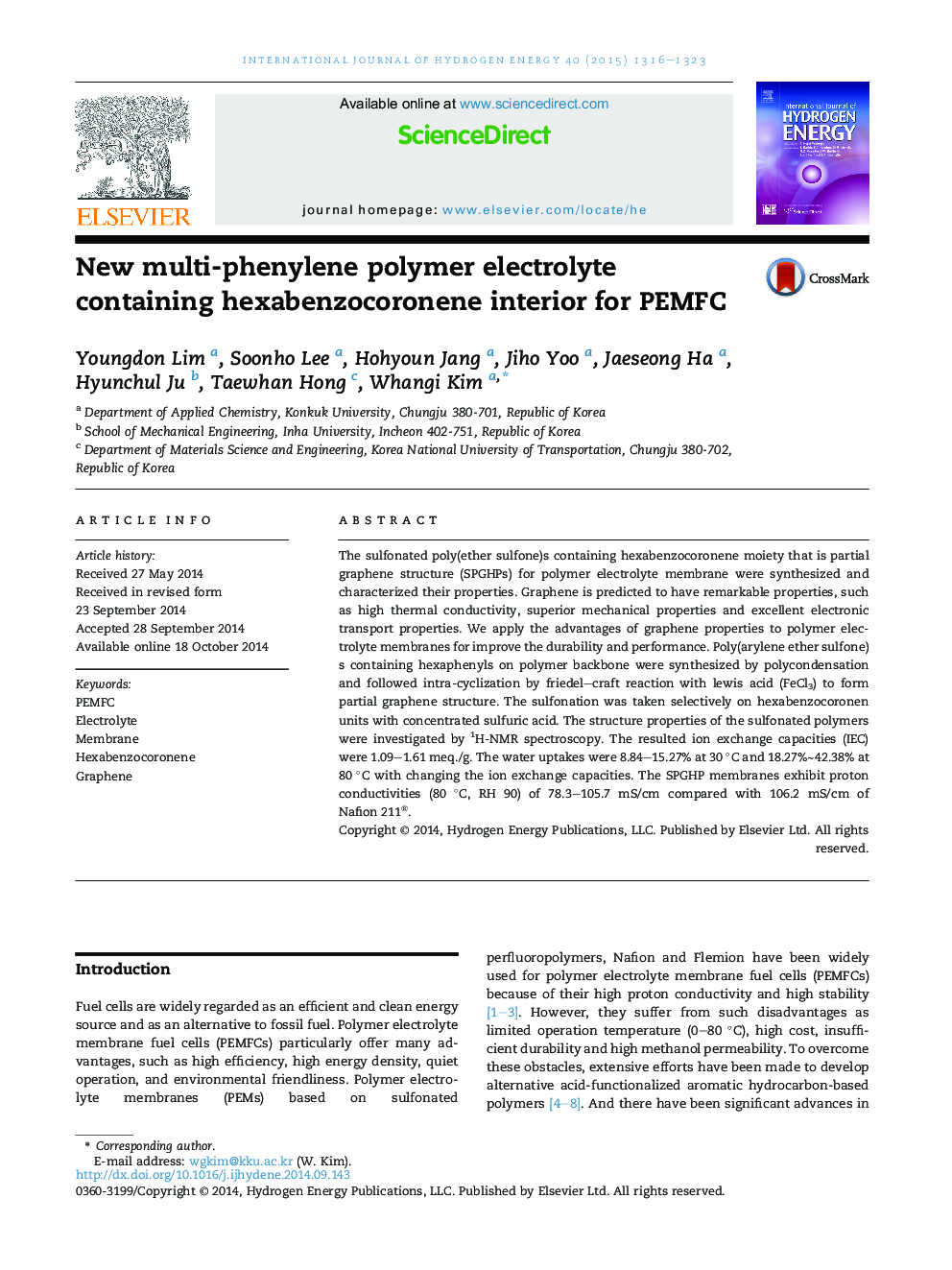| Article ID | Journal | Published Year | Pages | File Type |
|---|---|---|---|---|
| 1270228 | International Journal of Hydrogen Energy | 2015 | 8 Pages |
•We synthesize new polymer electrolyte containing hexabenzocoronene moieties.•We control degree of sulfonation by hexabenzocoronene moiety.•Increasing sulfonation level increases proton conductivity.•Membranes have good performance with chemically stability.
The sulfonated poly(ether sulfone)s containing hexabenzocoronene moiety that is partial graphene structure (SPGHPs) for polymer electrolyte membrane were synthesized and characterized their properties. Graphene is predicted to have remarkable properties, such as high thermal conductivity, superior mechanical properties and excellent electronic transport properties. We apply the advantages of graphene properties to polymer electrolyte membranes for improve the durability and performance. Poly(arylene ether sulfone)s containing hexaphenyls on polymer backbone were synthesized by polycondensation and followed intra-cyclization by friedel–craft reaction with lewis acid (FeCl3) to form partial graphene structure. The sulfonation was taken selectively on hexabenzocoronen units with concentrated sulfuric acid. The structure properties of the sulfonated polymers were investigated by 1H-NMR spectroscopy. The resulted ion exchange capacities (IEC) were 1.09–1.61 meq./g. The water uptakes were 8.84–15.27% at 30 °C and 18.27%∼42.38% at 80 °C with changing the ion exchange capacities. The SPGHP membranes exhibit proton conductivities (80 °C, RH 90) of 78.3–105.7 mS/cm compared with 106.2 mS/cm of Nafion 211®.
Graphical abstractA series of PGHPs were synthesized by polycondensation and followed intra-cyclization by friedel–craft reaction with lewis acid (FeCl3) to form partial graphene structure. Graphene is predicted to have remarkable properties, such as high thermal conductivity, superior mechanical properties and excellent electronic transport properties. Compared with Nafion 211® membrane, these SPGHPs show comparable IECs from 1.09 to 1.61 meq./g, water uptake from 18.27 to 42.38%, proton conductivity from 78.3 to 105.7 mS/cm, maximum power densities from 528 to 631 W/cm2 and high thermal stability. The proton conductivity and power density of SPGHP 25 was almost same to Nafion 211®. These results showed that the morphology of polymer matrix greatly affected the cell performance, and membrane contained graphene structure have excellent dimensional stability in spite of high IEC.Figure optionsDownload full-size imageDownload as PowerPoint slide
